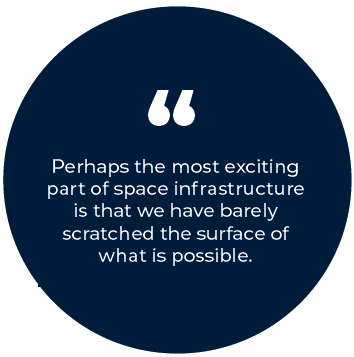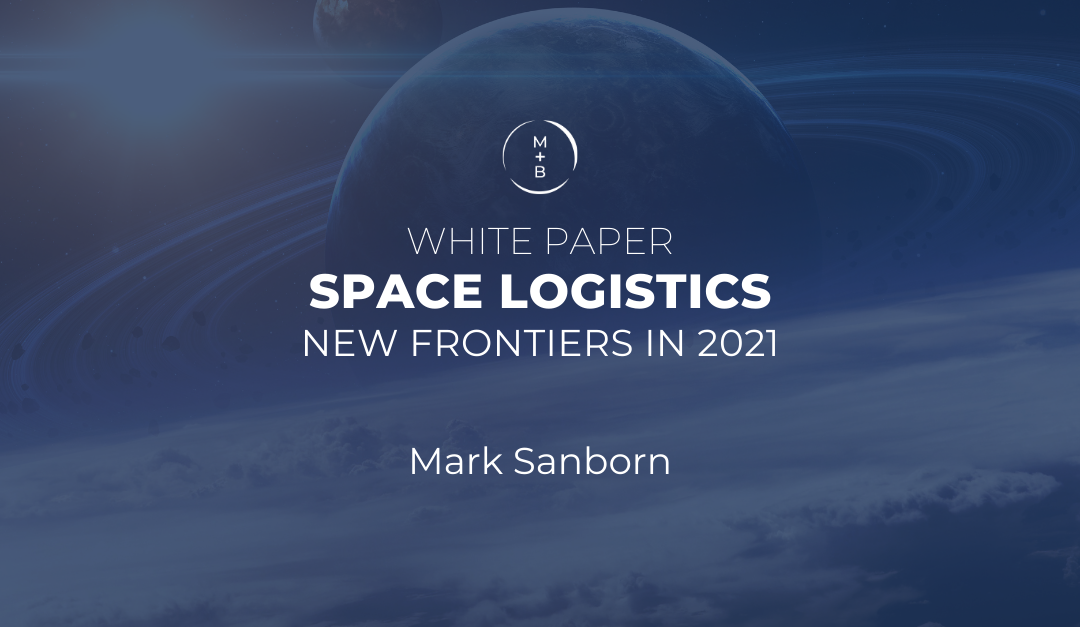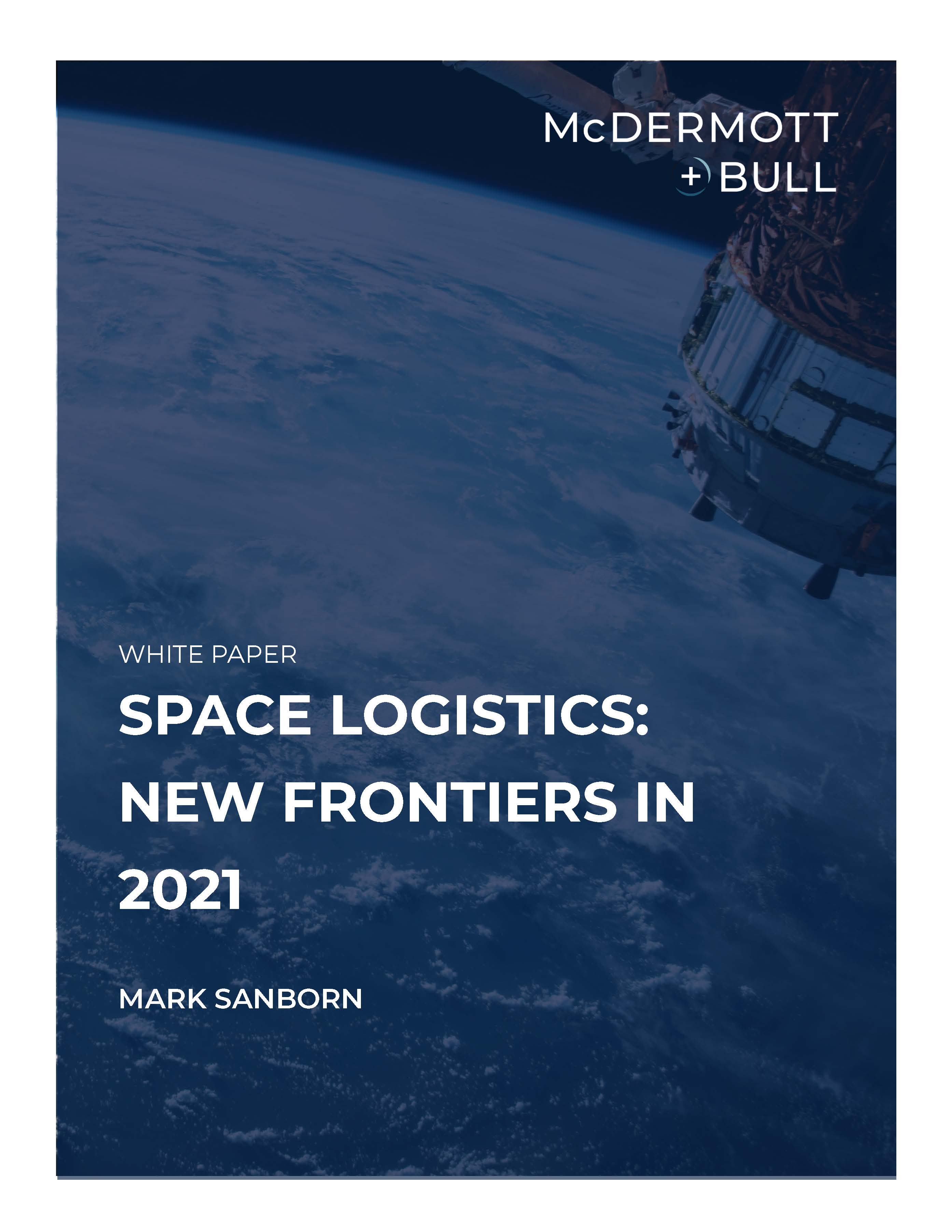NEW FRONTIERS
In the book The Unspoken Alliance Between Astrophysics and the Military by American astrophysicist Neil deGrasse Tyson, he explores an interesting practice: thousands of years ago, generals would “sponsor” scientists and astronomers to predict lunar eclipses — the historical equivalent of today’s research grants. From a psychological perspective, generals considered a lunar eclipse to be a huge advantage prior to a battle. It would obviously offer a huge tactical advantage to appear as though you command the heavens.
We may no longer plan battles around lunar eclipses, but military and space continue to intersect. Through the Department of Defense and divisions like the Space Force, the U.S. government is funding various space exploration initiatives. One of the strongest benefits of this relationship is the increased effectiveness of space logistics.
Think about all of the infrastructure and logistical planning we often take for granted on Earth. Gas stations, telephone lines, power lines — they did not exist 200 years ago, and today their presence is a given. There is a lot that goes into that planning, and the same applies to space.
REACHING NEW HEIGHTS
Space logistics is extending what is possible by building out impressive infrastructure. For example, Intelsat 901 (IS-901) returned to service after docking with Northrop Grumman’s Mission Extension Vehicle (MEV-1) in geostationary orbit. For nearly 20 years, IS-901 has provided broadcast services, including direct-to-home, managed, and VSAT, to Intelsat’s commercial and government customers.
When IS-901 needed to be saved from the satellite graveyard, Intelsat raised its orbit to the same altitude as MEV-1 to begin the docking process. With multiple cameras, laser range finders, and on-board computers, MEV-1 detected, tracked, and docked with IS- 901. MEV-1 was now steering the combined spacecraft stack and was able to transition commercial and government customers onto the satellite.
THE WEALTH OF SPACE
In cislunar space — the area between Earth and the moon, including asteroids near the moon — there is more than a thousand years’ worth of Earth’s annual production of metals like gold, silver, and platinum.
There is tremendous potential for economic wealth and economic activity just in the natural resources, let alone specialty manufacturing and things that we can only make practically in the environment of space.
Tory Bruno, President + CEO, United Launch Alliance
The biggest issue holding us back right now? Transportation. Currently, about half the weight of a 100-kilogram satellite has to be reserved for fuel, since the satellite is a closed system. They will need to have a higher weight limit and longer lifespan to effectively launch, reach orbit, stabilize, and put four wheels down to drive across the moon, for instance.
To solve that problem, ULA is proposing a strategic reserve, which is modeled after the strategic petroleum reserve on Earth. Our strategic reserve has enough oil to sustain the U.S. economy for about three months. A cislunar reserve would need enough oil for about two years, since additional transportation factors must be considered.
WHAT THE FUTURE HOLDS
Companies such as Redwire are building out platforms to manufacture items in space and efficiently repair space vehicles. They are also acquiring other specialty companies to expedite the process. New on-orbit manufacturers are right around the corner too, with Varda Space Industries recently raising $9 million for a very similar type of operation.
Thanks to companies like Orbit Fab and Maxar, it may become common to see a satellite and a semi-autonomous inspection vehicle traveling in synchronous orbit. This inspection satellite is a “fixer,” capable of repair and refueling. Think of it as the patrol car of the interstellar highways. Most likely, they will focus on the cislunar region first and move into deep space in the future. Eventually, we may even be able to assemble a new vehicle in space instead of attempting on-orbit repairs.

These solutions will help from a cost and efficiency standpoint. Let us say you have an office chair on the moonbase that loses a screw. By extracting carbon and other elements from the moon and asteroids, we can 3D print a new screw, right in your lunar office. That is much better than spending $50 million just to launch a single replacement screw from Earth to your lunar office.
As the government and space continue to go hand-in-hand, we will see new innovations provide benefits both in space and here on Earth.

Mark Sanborn
Managing Director
(619) 940-7955
msanborn@mbexec.com
Mark Sanborn serves as a Managing Director for McDermott + Bull with a focus on the aerospace and defense, industrial, automotive, and CPG sectors. As a former Navy Officer, Mark’s experience leading in a range of unique environments brings a dynamic and valuable approach to his engagements. His clients have included a range of public, private, and international companies, such as AMETEK, Snap-On Tools, RUAG International, SpaceX, FOX Factory, and HBD Industries. His ability to build lasting partnerships with his clients is deeply rooted in his knowledge of company lifecycles, high-performing teams, diverse human capital, and growth.


